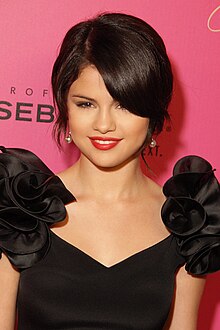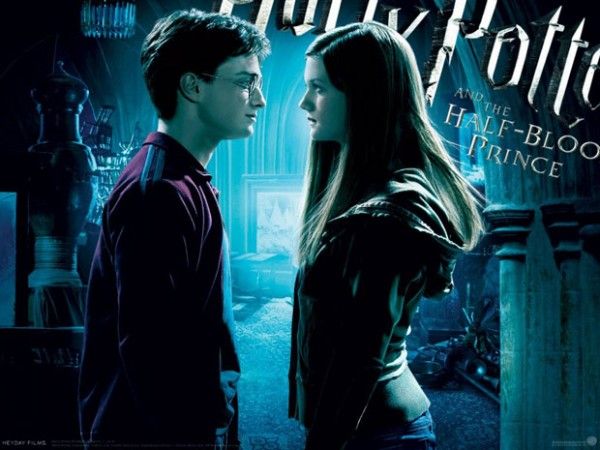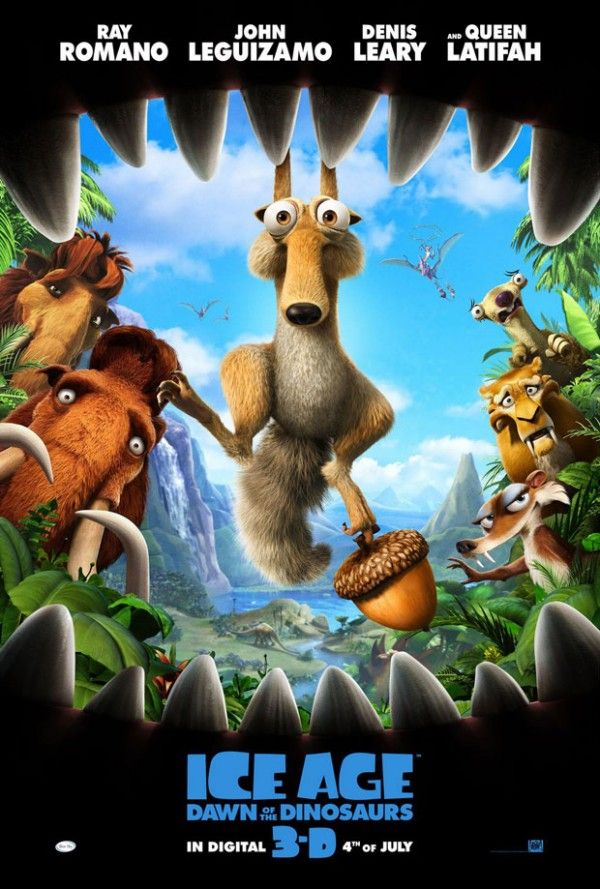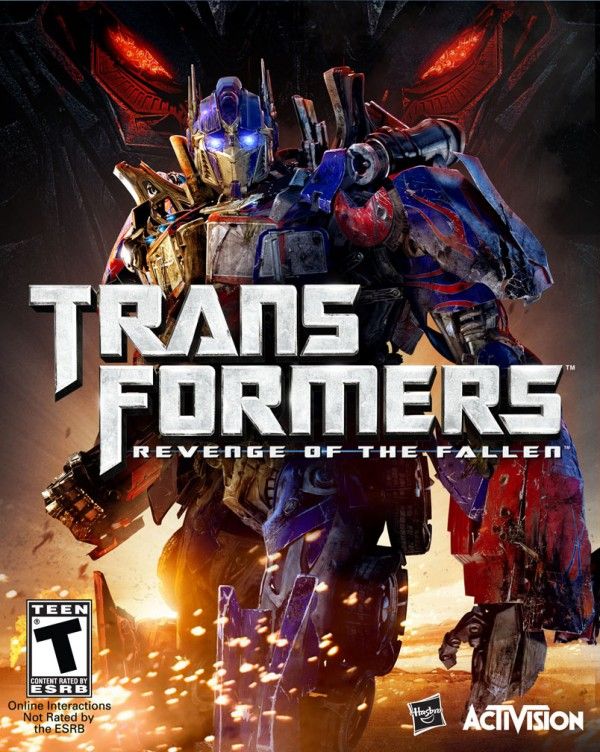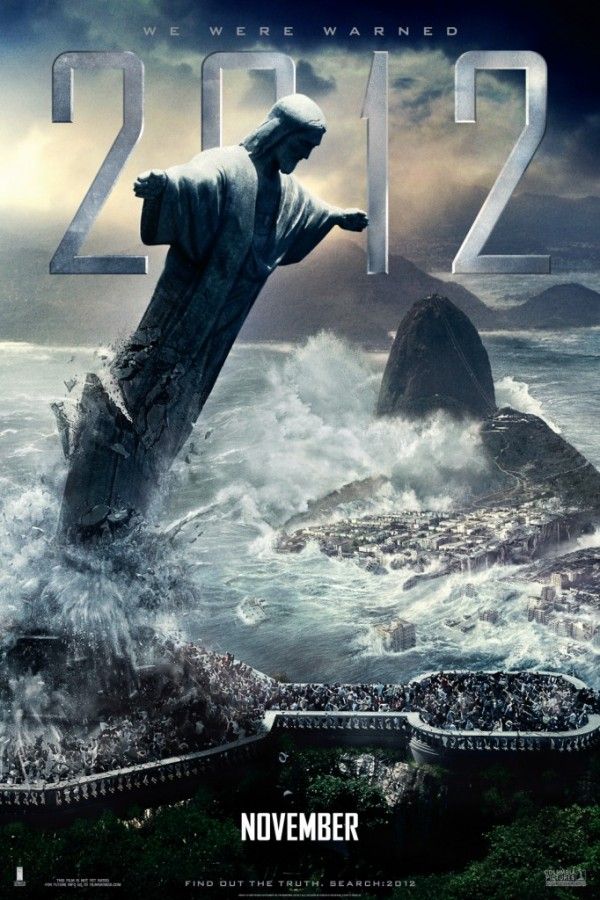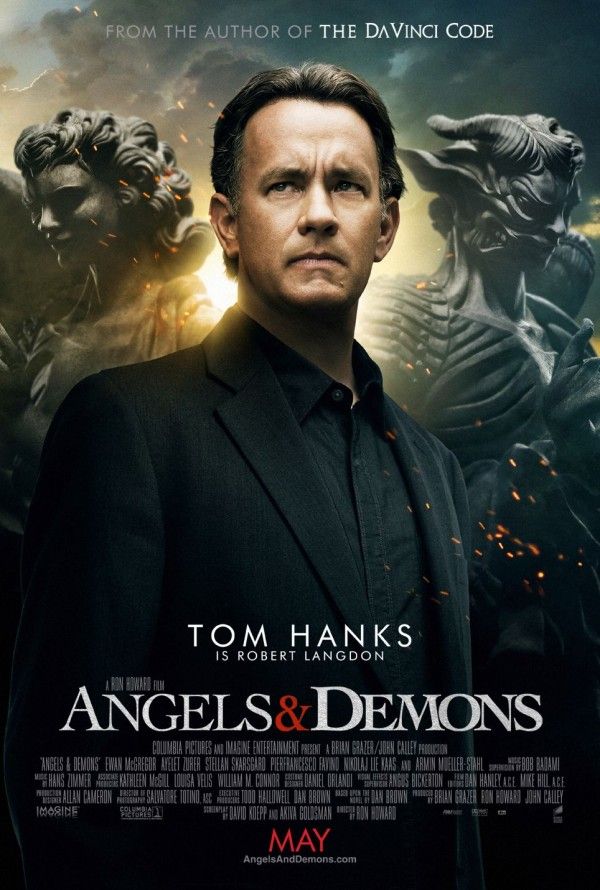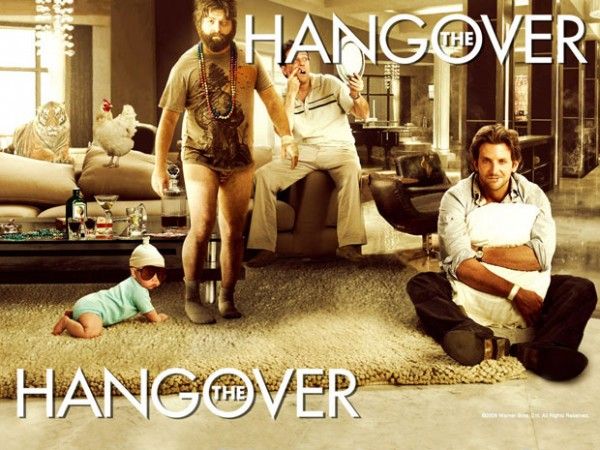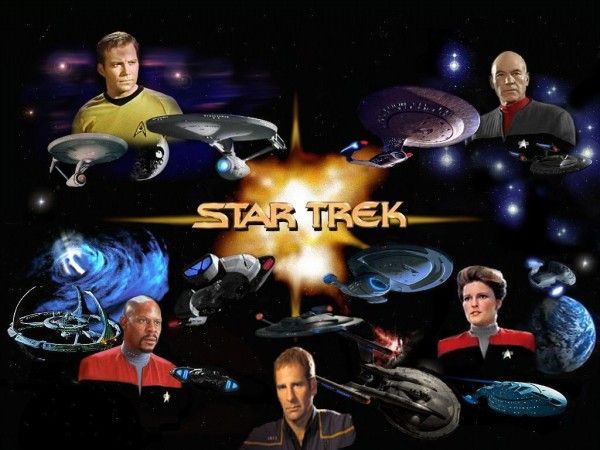Harry Potter is a series of seven fantasy novels written by British author J. K. Rowling. The books chronicle the adventures of the adolescent wizard Harry Potter and his best friends Ron Weasley and Hermione Granger, all of whom are students at Hogwarts School of Witchcraft and Wizardry. The central story arc concerns Harry's struggle against the evil wizard Lord Voldemort, who killed Harry's parents in his quest to conquer the wizarding world and subjugate non-magical people (Muggles). Several successful derivative films, video games and other themed merchandise have been based upon the series.
Since the 1997 release of the first novel Harry Potter and the Philosopher's Stone, which was retitled Harry Potter and the Sorcerer's Stone in the United States, the books have gained immense popularity, critical acclaim and commercial success worldwide.[1] As of June 2008, the book series has sold more than 400 million copies and has been translated into 67 languages,[2][3] and the last four books have consecutively set records as the fastest-selling books in history.
English-language versions of the books are published by Bloomsbury in the United Kingdom, Scholastic Press in the United States, Allen & Unwin in Australia, and Raincoast Books in Canada. Thus far, the first six books have been made into a series of motion pictures by Warner Bros., with the sixth, Harry Potter and the Half-Blood Prince, released on 15 July 2009.[4] The series also originated much tie-in merchandise, making the Harry Potter brand worth £15 billion.[5] The seventh book will be made into two movies released six months apart.
Plot
The novels revolve around Harry Potter, an orphan who discovers that he is a wizard at the age of eleven.[6] Wizard ability is inborn, but children are sent to wizarding school to learn the magical skills necessary to succeed in the wizarding world.[7] Harry is invited to attend the boarding school called Hogwarts School of Witchcraft and Wizardry. Each book chronicles one year in Harry's life, and most of the events take place at Hogwarts.[8] As he struggles through adolescence, Harry learns to overcome many magical, social and emotional hurdles.[9]
Wizarding world
Flashbacks throughout the series reveal that when Harry was a baby he witnessed his parents' murder by Lord Voldemort who was a dark wizard obsessed with racial purity.[10] For reasons not immediately revealed, Voldemort's attempt to kill Harry rebounds.[10] Voldemort is seemingly killed and Harry survives with only a lightning-shaped mark on his forehead as a memento of the attack.[10] As its inadvertent saviour from Voldemort's reign of terror, Harry becomes a living legend in the wizard world. However, at the orders of his patron, the wizard Albus Dumbledore, the orphaned Harry is placed in the home of his unpleasant Muggle (non-wizard) relatives, who keep him safe but completely ignorant of his true heritage.[10]
The first novel in the series, Harry Potter and the Philosopher's Stone, begins near Harry's 11th birthday. Half-giant Rubeus Hagrid reveals Harry's history and introduces him to the wizarding world.[10] The world J. K. Rowling created is both completely separate from and yet intimately connected to the real world. While the fantasy world of Narnia is an alternative universe and the Lord of the Rings’ Middle-earth a mythic past, the Wizarding world of Harry Potter exists alongside that of the real world and contains magical elements similar to things in the non-magical world. Many of its institutions and locations are in places that are recognisable in the real world, such as London.[11] It comprises a fragmented collection of hidden streets, overlooked and ancient pubs, lonely country manors and secluded castles that remain invisible to the non-magical population of Muggles.[7]
With Hagrid's help, Harry prepares for and undertakes his first year of study at Hogwarts. As Harry begins to explore the magical world, the reader is introduced to many of the primary locations used throughout the series. Harry meets most of the main characters and gains his two closest friends: Ron Weasley, a fun-loving member of an ancient, large, happy, but hard-up wizarding family, and Hermione Granger, an obsessively bookish witch of non-magical parentage.[10][12] Harry also encounters the school's potions master, Severus Snape, who displays a deep and abiding dislike for him. The plot concludes with Harry's second confrontation with Lord Voldemort, who in his quest for immortality, yearns to gain the power of the Philosopher's Stone.[10]
The series continues with Harry Potter and the Chamber of Secrets describing Harry's second year at Hogwarts. He and his friends investigate a 50-year-old mystery that appears tied to recent sinister events at the school. The novel delves into the history of Hogwarts and a legend revolving around the "Chamber of Secrets", the underground lair of an ancient evil. For the first time, Harry realises that racial prejudice exists in the wizarding world, and he learns that Voldemort's reign of terror was often directed at wizards who were descended from Muggles. Harry is also shocked to learn that he can speak Parseltongue, the language of snakes; this rare ability is often equated with the dark arts. The novel ends after Harry saves the life of Ron's younger sister, Ginny Weasley, by destroying the diary in which Voldemort saved a piece of his soul (although Harry does not realize this until later in the series). The concept of storing part of one's soul inside of an object in order to prevent death is officially introduced in the sixth novel under the term "horcrux".[10]
The third novel, Harry Potter and the Prisoner of Azkaban, follows Harry in his third year of magical education. It is the only book in the series which does not feature Voldemort. Instead, Harry must deal with the knowledge that he has been targeted by Sirius Black, an escaped murderer believed to have assisted in the deaths of Harry's parents. As Harry struggles with his reaction to the dementors—dark creatures with the power to devour a human soul—which are ostensibly protecting the school, he reaches out to Remus Lupin, a Defence Against the Dark Arts teacher with a dark secret. Lupin teaches Harry defensive measures which are well above the level of magic generally shown by people his age. Harry learns that both Lupin and Black were close friends of his father and that Black was framed by their fourth friend, Peter Pettigrew.[13]
Voldemort returns
During Harry's fourth year of school, detailed in Harry Potter and the Goblet of Fire, Harry unwillingly participates in the Triwizard Tournament, a dangerous magical contest with the young foreign witches and wizards of visiting schools.[14] Harry attempts to discover who has forced him to compete in the tournament, and why.[15] An anxious Harry is guided through the tournament by Professor Alastor Moody, who is the Defence Against the Dark Arts teacher. The point at which the mystery is unravelled marks the series' shift from foreboding and uncertainty into open conflict as the children are growing up. The novel ends with the resurgence of Voldemort and the death of a student (Cedric Diggory)
In the fifth book, Harry Potter and the Order of the Phoenix, Harry must confront the newly resurfaced Voldemort. In response to Voldemort's reappearance, Dumbledore re-activates the Order of the Phoenix, a secret society which works from Sirius Black's dark family home to defeat Voldemort's minions and protect Voldemort's targets, including Harry. The Order includes many of the adults Harry trusts, including Remus Lupin, Sirius Black, and members of the Weasley family, but also some surprising members. Good and the dark characters are not so obvious. Despite Harry's description of Voldemort's recent activities, the Ministry of Magic and many others in the magical world refuse to believe that Voldemort has returned.[16]
In an attempt to counter and eventually discredit Dumbledore, who along with Harry is the most prominent voice in the Wizarding World attempting to warn of the Dark Lord's return, the Ministry appoints Dolores Umbridge as the High Inquisitor of Hogwarts. She transforms the school by a dictatorial regime and refuses to allow the students to learn ways to defend themselves against dark magic.[16] Harry forms a secret study group to teach his classmates the higher-level skills of Defense Against the Dark Arts that he has learned. The novel introduces Harry to Luna Lovegood, an airy young witch with a tendency to believe in oddball conspiracy theories. An important prophecy concerning Harry and Voldemort is revealed,[17] and Harry discovers that he and Voldemort have a painful connection, allowing Harry to view some of Voldemort's actions telepathically. In the novel's climax, Harry and his school friends face off against Voldemort's Death Eaters, who include the rich and arrogant Malfoy family. The timely arrival of members of the Order of the Phoenix saves the children's lives and allows many of the Death Eaters to be captured and imprisoned.[16]
In their sixth year, in Harry Potter and the Half-Blood Prince, the protagonists have passed their OWL-levels and start on their specialist NEWT courses. Voldemort is leading another wizarding war, which has become so violent that even Muggles have noticed some of its effects. Although Harry and friends are relatively protected from that danger at Hogwarts, they are subject to all the difficulties of adolescence. At the beginning of the novel, he stumbles upon an old potions textbook filled with annotations and recommendations signed by a mysterious writer, the Half-Blood Prince.[18] While the shortcuts written in the book help Harry to excel at potions, he eventually learns to mistrust the anonymous writer's spells. Harry also takes private tutoring with Albus Dumbledore, who shows him various memories concerning the early life of Voldemort. These reveal that Voldemort's soul is splintered into a series of horcruxes, evil enchanted items hidden in various locations.[18] Harry's snobbish adversary, Draco Malfoy, attempts to attack Dumbledore, and the book culminates in the killing of Dumbledore by Professor Snape.
Harry Potter and the Deathly Hallows, the last book in the series, begins directly after the events of the sixth book. Voldemort has completed his ascension to power and gains control of the Ministry of Magic. Harry, Ron, and Hermione drop out of school so that they can find and destroy Voldemort's remaining horcruxes. To ensure their own safety as well as that of their family and friends, they are forced to isolate themselves. As they search for the horcruxes, the trio learn details about Dumbledore's past, as well as Snape's true motives.
The book culminates in the Battle of Hogwarts. Harry, Ron, and Hermione, in conjunction with members of the Order of the Phoenix and many of the teachers and students, defend Hogwarts from Voldemort, his Death Eaters, and various magical creatures. Several major characters are killed in the first wave of the battle and Voldemort resumes his intention to kill Harry. In an effort to save the survivors, Harry surrenders himself but the battle resumes as the parents of many Hogwarts students, residents of the nearby village Hogsmeade and other magical creatures arrive to reinforce the Order of the Phoenix. With the last horcrux destroyed, Harry finally faces Voldemort. Harry offers the Dark Lord a chance at remorse, but Voldemort ignores this and attempts to kill Harry one final time; resulting in Voldemort's death by his own hand. An epilogue describes the lives of the surviving characters and the effects on the wizarding world.
Supplementary works
Rowling has expanded the Harry Potter universe with several short books produced for various charities.[19][20] In 2001, she released Fantastic Beasts and Where to Find Them (a purported Hogwarts textbook) and Quidditch Through the Ages (a book Harry read for fun). Proceeds from the sale of these two books benefitted the charity Comic Relief.[21] In 2007, Rowling composed seven handwritten copies of The Tales of Beedle the Bard, a collection of fairy tales that is featured in the final novel, one of which was auctioned to raise money for the Children's High Level Group, a fund for mentally disabled children in poor countries. The book was published internationally on 4 December 2008.[22][23][24] Rowling also wrote an 800-word prequel in 2008 as part of a fundraiser organised by the bookseller Waterstones.[25]
Structure and genre
The Harry Potter novels fall within the genre of fantasy literature; however, in many respects they are also bildungsromans, or coming of age novels.[26] They can be considered part of the British children's boarding school genre, which includes Enid Blyton's Malory Towers, St. Clare's and the Naughtiest Girl series, and Frank Richards's Billy Bunter novels.[27] The Harry Potter books are predominantly set in Hogwarts, a fictional British boarding school for wizards, where the curriculum includes the use of magic.[27] In this sense they are "in a direct line of descent from Thomas Hughes's Tom Brown's School Days and other Victorian and Edwardian novels of British public school life".[28][29] They are also, in the words of Stephen King, "shrewd mystery tales",[30] and each book is constructed in the manner of a Sherlock Holmes-style mystery adventure. The stories are told from a third person limited point of view with very few exceptions (such as the opening chapters of Philosopher's Stone and Deathly Hallows and the first two chapters of Half-Blood Prince).
In the middle of each book, Harry struggles with the problems he encounters, and dealing with them often involves the need to violate some school rules—the penalties, in case of being caught out, being disciplinary punishments set out in the Hogwarts regulations (in which the Harry Potter books follow many precedents in the boarding school sub-genre).[27] However, the stories reach their climax in the summer term, near or just after final exams, when events escalate far beyond in-school squabbles and struggles, and Harry must confront either Voldemort or one of his followers, the Death Eaters, with the stakes a matter of life and death–a point underlined, as the series progresses, by one or more characters being killed in each of the final four books.[31][32] In the aftermath, he learns important lessons through exposition and discussions with head teacher and mentor Albus Dumbledore.
In the final novel, Harry Potter and the Deathly Hallows, Harry and his friends spend most of their time away from Hogwarts, and only return there to face Voldemort at the dénouement.[31] Completing the bildungsroman format, in this part Harry must grow up prematurely, losing the chance of a last year as a pupil in a school and needing to act as an adult, on whose decisions everybody else depends—the grown-ups included.[33]
Themes
According to Rowling, a major theme in the series is death: "My books are largely about death. They open with the death of Harry's parents. There is Voldemort's obsession with conquering death and his quest for immortality at any price, the goal of anyone with magic. I so understand why Voldemort wants to conquer death. We're all frightened of it."[34]
Academics and journalists have many other interpretations of themes in the books, some more complex than others, and some including political subtexts. Themes such as normality, oppression, survival, and overcoming imposing odds have all been considered as prevalent throughout the series.[35] Similarly, the theme of making one's way through adolescence and "going over one's most harrowing ordeals—and thus coming to terms with them" has also been considered.[36] Rowling has stated that the books comprise "a prolonged argument for tolerance, a prolonged plea for an end to bigotry" and that also pass on a message to "question authority and... not assume that the establishment or the press tells you all of the truth".[37][38]
While the books could be said to comprise many other themes, such as power/abuse of power, love, prejudice, and free choice, they are, as J.K. Rowling states, "deeply entrenched in the whole plot"; the writer prefers to let themes "grow organically", rather than sitting down and consciously attempting to impart such ideas to her readers.[39] Along the same lines is the ever-present theme of adolescence, in whose depiction Rowling has been purposeful in acknowledging her characters' sexualities and not leaving Harry, as she put it, "stuck in a state of permanent pre-pubescence".[40] Rowling said that, to her, the moral significance of the tales seems "blindingly obvious." The key for her was the choice between what is right and what is easy, "because that ... is how tyranny is started, with people being apathetic and taking the easy route and suddenly finding themselves in deep trouble."[41]
Origins and publishing history
In 1990, J. K. Rowling was on a crowded train from Manchester to London when the idea for Harry suddenly "fell into her head". Rowling gives an account of the experience on her website saying:[42]
"I had been writing almost continuously since the age of six but I had never been so excited about an idea before. I simply sat and thought, for four (delayed train) hours, and all the details bubbled up in my brain, and this scrawny, black-haired, bespectacled boy who did not know he was a wizard became more and more real to me."
Rowling completed Harry Potter and the Philosopher's Stone in 1995 and the manuscript was sent off to several prospective agents.[43] The second agent she tried, Christopher Little, offered to represent her and sent the manuscript to Bloomsbury. After eight other publishers had rejected Philosopher's Stone, Bloomsbury offered Rowling a £2,500 advance for its publication.[44][45] Despite Rowling's statement that she did not have any particular age group in mind when beginning to write the Harry Potter books, the publishers initially targeted children aged nine to eleven.[46] On the eve of publishing, Rowling was asked by her publishers to adopt a more gender-neutral pen name in order to appeal to the male members of this age group, fearing that they would not be interested in reading a novel they knew to be written by a woman. She elected to use J. K. Rowling (Joanne Kathleen Rowling), using her grandmother's name as her second name because she has no middle name.[45][47]
Harry Potter and the Philosopher's Stone was published by Bloomsbury, the publisher of all Harry Potter books in the United Kingdom, on 30 June 1997.[48] It was released in the United States on 1 September, 1998 by Scholastic—the American publisher of the books—as Harry Potter and the Sorcerer's Stone,[49] after Rowling had received US$105,000 for the American rights—an unprecedented amount for a children's book by a then-unknown author.[50] Fearing that American readers would not associate the word "philosopher" with a magical theme (although the Philosopher's Stone is alchemy-related), Scholastic insisted that the book be given the title Harry Potter and the Sorcerer's Stone for the American market.
The second book, Harry Potter and the Chamber of Secrets was originally published in the UK on 2 July 1998 and in the US on 2 June, 1999.[51][52] Harry Potter and the Prisoner of Azkaban was then published a year later in the UK on 8 July 1999 and in the US on 8 September 1999.[51][52] Harry Potter and the Goblet of Fire was published on 8 July 2000 at the same time by Bloomsbury and Scholastic.[53] Harry Potter and the Order of the Phoenix is the longest book in the series at 766 pages in the UK version and 870 pages in the US version.[54] It was published worldwide in English on 21 June 2003.[55] Harry Potter and the Half-Blood Prince was published on 16 July 2005, and it sold 9 million copies in the first 24 hours of its worldwide release.[56][57] The seventh and final novel, Harry Potter and the Deathly Hallows, was published 21 July 2007.[58] The book sold 11 million copies in the first 24 hours of release, breaking down to 2.7 million copies in the UK and 8.3 million in the US.[59]
Translations
The series has been translated into 67 languages,[2][60] placing Rowling among the most translated authors in history.[61] The first translation was into American English, as many words and concepts used by the characters in the novels may have been misleading to a young American audience.[62] Subsequently, the books have seen translations to diverse languages such as Ukrainian, Arabic, Urdu, Hindi, Bengali, Welsh, Afrikaans, Latvian and Vietnamese. The first volume has been translated into Latin and even Ancient Greek,[63] making it the longest published work in Ancient Greek since the novels of Heliodorus of Emesa in the 3rd century AD.[64]
Some of the translators hired to work on the books were quite well-known before their work on Harry Potter, such as Viktor Golyshev, who oversaw the Russian translation of the series' fifth book. The Turkish translation of books two to seven was undertaken by Sevin Okyay, a popular literary critic and cultural commentator.[65] For reasons of secrecy, translation can only start when the books are released in English; thus there is a lag of several months before the translations are available. This has led to more and more copies of the English editions being sold to impatient fans in non-English speaking countries. Such was the clamour to read the fifth book that its English language edition became the first English-language book ever to top the bestseller list in France.[66]
Completion of the series
In December 2005, Rowling stated on her web site, "2006 will be the year when I write the final book in the Harry Potter series."[67] Updates then followed in her online diary chronicling the progress of Harry Potter and the Deathly Hallows, with the release date of 21 July 2007. The book itself was finished on 11 January 2007 in the Balmoral Hotel, Edinburgh, where she scrawled a message on the back of a bust of Hermes. It read: "J. K. Rowling finished writing Harry Potter and the Deathly Hallows in this room (652) on 11 January 2007."[68]
Rowling herself has stated that the last chapter of the final book (in fact, the epilogue) was completed "in something like 1990".[69][70] In June 2006, Rowling, on an appearance on the British talk show Richard & Judy, announced that the chapter had been modified as one character "got a reprieve" and two others who previously survived the story had in fact been killed. On 28 March 2007, the cover art for the Bloomsbury Adult and Child versions and the Scholastic version were released.[71][72]
Achievements
Cultural impact
Fans of the series were so eager for the latest series release that bookstores around the world began holding events to coincide with the midnight release of the books, beginning with the 2000 publication of Harry Potter and the Goblet of Fire. The events, commonly featuring mock sorting, games, face painting, and other live entertainment have achieved popularity with Potter fans and have been highly successful in attracting fans and selling books with nearly nine million of the 10.8 million initial print copies of Harry Potter and the Half-Blood Prince sold in the first 24 hours.[73][74] The series has also gathered adult fans, leading to the release of two editions of each Harry Potter book, identical in text but with one edition's cover artwork aimed at children and the other aimed at adults.[75] Besides meeting online through blogs, podcasts, and fansites, Harry Potter super-fans can also meet at Harry Potter symposia. The word Muggle has spread beyond its Harry Potter origins, used by many groups to indicate those who are not aware or are lacking in some skill. In 2003, Muggle, entered the Oxford English Dictionary with that definition.[76] The Harry Potter fandom has embraced podcasts as a regular, often weekly, insight to the latest discussion in the fandom. Both MuggleCast and PotterCast[77] have reached the top spot of iTunes podcast rankings and have been polled one of the top 50 favourite podcasts.[78]
Awards and honours
The Harry Potter series have been the recipients of a host of awards since the initial publication of Philosopher's Stone including four Whitaker Platinum Book Awards (all of which were awarded in 2001),[79] three Nestlé Smarties Book Prizes (1997–1999),[80] two Scottish Arts Council Book Awards (1999 and 2001),[81] the inaugural Whitbread children's book of the year award (1999),[82] the WHSmith book of the year (2006),[83] among others. In 2000, Harry Potter and the Prisoner of Azkaban was nominated for Best Novel in the Hugo Awards while in 2001, Harry Potter and the Goblet of Fire won said award.[84] Honours include a commendation for the Carnegie Medal (1997),[85] a short listing for the Guardian Children's Award (1998), and numerous listings on the notable books, editors' Choices, and best books lists of the American Library Association, The New York Times, Chicago Public Library, and Publishers Weekly.[86]
Commercial success
The popularity of the Harry Potter series has translated into substantial financial success for Rowling, her publishers, and other Harry Potter related license holders. This success has made Rowling the first and thus far only billionaire author.[87] The books have sold more than 400 million copies worldwide and have also given rise to the popular film adaptations produced by Warner Bros., all of which have been highly successful in their own right with the first, Harry Potter and the Philosopher's Stone, ranking number five on the inflation-unadjusted list of all-time highest grossing films and four others ranking in the top 15, while all six films released, so far, place in the top 25.[3][88] The films have in turn spawned eight video games and have led to the licensing of more than 400 additional Harry Potter products (including an iPod) that have, as of 2005, made the Harry Potter brand worth US$4 billion and J. K. Rowling worth $1 billion[89] making her, by some reports, richer than Queen Elizabeth II.[90][91] However, Rowling has stated that this is false.[92]
The great demand for Harry Potter books motivated the New York Times to create a separate bestseller list for children's literature in 2000, just before the release of Harry Potter and the Goblet of Fire. By 24 June 2000, Rowling's novels had been on the list for 79 straight weeks; the first three novels were each on the hardcover bestseller list.[93] On 12 April 2007, Barnes & Noble declared that Deathly Hallows had broken its pre-order record, with more than 500,000 copies pre-ordered through its site.[94] For the release of Goblet of Fire, 9,000 FedEx trucks were used with no other purpose than to deliver the book.[95] Together, Amazon.com and Barnes & Noble pre-sold more than 700,000 copies of the book.[95] In the United States, the book's initial printing run was 3.8 million copies.[95] This record statistic was broken by Harry Potter and the Order of the Phoenix, with 8.5 million, which was then shattered by Half-Blood Prince with 10.8 million copies.[96] 6.9 million copies of Prince were sold in the U.S. within the first 24 hours of its release; in the United Kingdom more than two million copies were sold on the first day.[97] The initial U.S. print run for Deathly Hallows was 12 million copies, and more than a million were pre-ordered through Amazon and Barnes & Noble.[98]
Criticism, praise, and controversy
Literary criticism

British editions of the seven
Harry Potter books
Early in its history, Harry Potter received positive reviews. On publication, the first volume, Harry Potter and the Philosopher's Stone, attracted attention from the Scottish newspapers, such as The Scotsman, which said it had "all the makings of a classic",[99] and The Glasgow Herald, which called it "Magic stuff".[99] Soon the English newspapers joined in, with more than one comparing it to Roald Dahl's work: The Mail on Sunday rated it as "the most imaginative debut since Roald Dahl",[99] a view echoed by The Sunday Times ("comparisons to Dahl are, this time, justified"),[99] while The Guardian called it "a richly textured novel given lift-off by an inventive wit".[99]
By the time of the release of the fifth volume, Harry Potter and the Order of the Phoenix, the books began to receive strong criticism from a number of literary scholars. Yale professor, literary scholar and critic Harold Bloom raised criticisms of the books' literary merits, saying, "Rowling's mind is so governed by clichés and dead metaphors that she has no other style of writing."[100] A. S. Byatt authored a New York Times op-ed article calling Rowling's universe a "secondary world, made up of patchworked derivative motifs from all sorts of children's literature ... written for people whose imaginative lives are confined to TV cartoons, and the exaggerated (more exciting, not threatening) mirror-worlds of soaps, reality TV and celebrity gossip".[101]
The critic Anthony Holden wrote in The Observer on his experience of judging Harry Potter and the Prisoner of Azkaban for the 1999 Whitbread Awards. His overall view of the series was negative—"the Potter saga was essentially patronising, conservative, highly derivative, dispiritingly nostalgic for a bygone Britain", and he speaks of "pedestrian, ungrammatical prose style".[102] Ursula Le Guin said, "I have no great opinion of it. When so many adult critics were carrying on about the 'incredible originality' of the first Harry Potter book, I read it to find out what the fuss was about, and remained somewhat puzzled; it seemed a lively kid's fantasy crossed with a "school novel", good fare for its age group, but stylistically ordinary, imaginatively derivative, and ethically rather mean-spirited." [103]
By contrast, author Fay Weldon, while admitting that the series is "not what the poets hoped for", nevertheless goes on to say, "but this is not poetry, it is readable, saleable, everyday, useful prose".[104] The literary critic A. N. Wilson praised the Harry Potter series in The Times, stating: "There are not many writers who have JK’s Dickensian ability to make us turn the pages, to weep—openly, with tears splashing—and a few pages later to laugh, at invariably good jokes ... We have lived through a decade in which we have followed the publication of the liveliest, funniest, scariest and most moving children’s stories ever written".[105] Charles Taylor of Salon.com, who is primarily a movie critic,[106] took issue with Byatt's criticisms in particular. While he conceded that she may have "a valid cultural point—a teeny one—about the impulses that drive us to reassuring pop trash and away from the troubling complexities of art",[107] he rejected her claims that the series is lacking in serious literary merit and that it owes its success merely to the childhood reassurances it offers. Taylor stressed the progressively darker tone of the books, shown by the murder of a classmate and close friend and the psychological wounds and social isolation each causes. Taylor also argued that Philosopher's Stone, said to be the most lighthearted of the seven published books, disrupts the childhood reassurances that Byatt claims spur the series' success: the book opens with news of a double murder, for example.[107]
Stephen King called the series "a feat of which only a superior imagination is capable", and declared "Rowling's punning, one-eyebrow-cocked sense of humour" to be "remarkable". However, he wrote that despite the story being "a good one", he is "a little tired of discovering Harry at home with his horrible aunt and uncle", the formulaic beginning of all seven books.[30] King has also joked that "Rowling's never met an adverb she did not like!" He does however predict that Harry Potter "will indeed stand time's test and wind up on a shelf where only the best are kept; I think Harry will take his place with Alice, Huck, Frodo, and Dorothy and this is one series not just for the decade, but for the ages."[108]
Social impacts
Although Time magazine named Rowling as a runner-up for its 2007 Person of the Year award, noting the social, moral, and political inspiration she has given her fandom,[109] cultural comments on the series have been mixed. Washington Post book critic Ron Charles opined in July 2007 that the large numbers of adults reading the Potter series but few other books may represent a "bad case of cultural infantilism", and that the straightforward "good vs. evil" theme of the series is "childish". He also argued "through no fault of Rowling's", the cultural and marketing "hysteria" marked by the publication of the later books "trains children and adults to expect the roar of the coliseum, a mass-media experience that no other novel can possibly provide".[110]
Librarian Nancy Knapp pointed out the books' potential to improve literacy by motivating children to read much more than they would otherwise do [111] Agreeing about the motivating effects, Diane Penrod also praised the books' blending of simple entertainment with "the qualities of highbrow literary fiction", but expressed concern about the distracting effect of the prolific merchandising that accompanies the book launches.[112]
Jennifer Conn used Snape's and Quidditch coach Madam Hooch's teaching methods as examples of what to avoid and what to emulate in clinical teaching,[113] and Joyce Fields wrote that the books illustrate four of the five main topics in a typical first-year sociology class: "sociological concepts including culture, society, and socialisation; stratification and social inequality; social institutions; and social theory".[114]
Jenny Sawyer wrote in the 25 July 2007 Christian Science Monitor that the books represent a "disturbing trend in commercial storytelling and Western society" in that stories "moral center have all but vanished from much of today's pop culture ... after 10 years, 4,195 pages, and over 375 million copies, J. K. Rowling's towering achievement lacks the cornerstone of almost all great children's literature: the hero's moral journey". Harry Potter, Sawyer argues, neither faces a "moral struggle" nor undergoes any ethical growth, and is thus "no guide in circumstances in which right and wrong are anything less than black and white".[115] On the other hand Emily Griesinger described Harry's first passage through to Platform 9¾ as an application of faith and hope, and his encounter with the Sorting Hat as the first of many in which Harry is shaped by the choices he makes. She also noted the "deeper magic" by which the self-sacrifice of Harry's mother protects the boy throughout the series, and which the power-hungry Voldemort fails to understand.[116]
In a 8 November 2002 Slate Magazine article, Chris Suellentrop likened Potter to a "trust-fund kid whose success at school is largely attributable to the gifts his friends and relatives lavish upon him". Noting that in Rowling's fiction, magical ability potential is "something you are born to, not something you can achieve", Suellentrop wrote that Dumbledore's maxim that "It is our choices that show what we truly are, far more than our abilities" is hypocritical, as "the school that Dumbledore runs values native gifts above all else".[117] In an 12 August 2007 The New York Times review of The Deathly Hallows, however, Christopher Hitchens praised Rowling for "unmooring" her "English school story" from literary precedents "bound up with dreams of wealth and class and snobbery", arguing that she had instead created "a world of youthful democracy and diversity".[118]
Controversies
The books have been the subject of a number of legal proceedings, stemming either from claims by American Christian groups that the magic in the books promotes witchcraft among children, or from various conflicts over copyright and trademark infringements. The popularity and high market value of the series has led Rowling, her publishers, and film distributor Warner Bros. to take legal measures to protect their copyright, which have included banning the sale of Harry Potter imitations, targeting the owners of websites over the "Harry Potter" domain name, and suing author Nancy Stouffer to counter her accusations that Rowling had plagiarised her work.[119][120][121] Various religious conservatives have claimed that the books promote witchcraft and are therefore unsuitable for children,[122] while a number of critics have criticised the books for promoting various political agendas.[123][124]
The books also aroused controversies in the literary and publishing worlds. In 1997 to 1998 Harry Potter and the Philosopher's Stone won almost all the UK awards judged by children, but none of the children's book awards judged by adults,[125] and Sandra Beckett suggested the reason was intellectual snobbery towards books that were popular among children.[126] In 1999 the winner of the Whitbread Book of the Year Award children's division was entered for the first time on the shortlist for the main award, and one judge threatened to resign if Harry Potter and the Prisoner of Azkaban was declared the overall winner; it finished second, very close behind the winner of the poetry prize, Seamus Heaney's translation of the Anglo-Saxon epic Beowulf.[126]
In 2000, shortly before publication of Harry Potter and the Goblet of Fire, the previous three Harry Potter books topped the New York Times fiction best-seller list and a third of the entries were children's books. The newspaper created a new children's section cover splits children's sections, including both fiction and non-fiction, and initially counting only hardback sales. The move was supported by publishers and booksellers.[127] In 2004 New York Times further split the children's list, which was still dominated by Harry Potter books into sections for series and individual books, and removed the Harry Potter books from the section for individual books.[128] The split in 2000 attracted condemnation, praise and some comments that presented both benefits and disadvantages of the move.[129] Time suggested that, on the same principle, Billboard should have created a separate "mop-tops" list in 1964 when the Beatles held the top five places in its list, and Nielsen should have created a separate game-show list when Who Wants to Be a Millionaire? dominated the ratings.[130]
Films
In 1998[131], Rowling sold the film rights of the first four Harry Potter books to Warner Bros. for a reported £1 million ($1,982,900).[132] Rowling demanded the principal cast be kept strictly British, nonetheless allowing for the inclusion of many Irish actors such as the late Richard Harris as Dumbledore, and for casting of French and Eastern European actors in Harry Potter and the Goblet of Fire where characters from the book are specified as such.[133] After many directors including Steven Spielberg, Terry Gilliam, Jonathan Demme, and Alan Parker were considered, Chris Columbus was appointed on 28 March, 2000 as director for Harry Potter and the Philosopher's Stone (titled "Harry Potter and the Sorcerer's Stone" in the United States), with Warner Bros. citing his work on other family films such as Home Alone and Mrs. Doubtfire as influences for their decision.[134] After extensive casting,[135] filming began in October 2000 at Leavesden Film Studios and in London itself, with production ending in July 2001.[136] Philosopher's Stone was released on 14 November, 2001. Just three days after Philosopher's Stone's release, production for Harry Potter and the Chamber of Secrets, also directed by Columbus began, finishing in summer 2002. The film was released on 15 November 2002.[137]
Chris Columbus declined to direct Harry Potter and the Prisoner of Azkaban, only acting as producer. Mexican director Alfonso Cuarón took over the job, and after shooting in 2003, the film was released on 4 June 2004. Due to the fourth film beginning its production before the third's release, Mike Newell was chosen as the director for Harry Potter and the Goblet of Fire,[138] released on 18 November 2005. Newell declined to direct the next movie, and British television director David Yates was chosen for Harry Potter and the Order of the Phoenix, which began production on January 2006,[139] and was released on 11 July 2007. Yates also directed Harry Potter and the Half-Blood Prince,[140] which was released on 15 July 2009.[4][141] In March 2008, Warner Bros. announced that the final instalment of the series, Harry Potter and the Deathly Hallows, would be filmed in two segments, with part one to be released in November 2010 and part two in July 2011. Production of both parts is underway, with Yates returning to direct.[142] The Harry Potter films have been top-rank box office hits, with five of the six on the list of 15 highest-grossing films worldwide.[143]
Opinions of the films are generally divided among fans, with one group preferring the more faithful approach of the first two films, and another group preferring the more stylised character-driven approach of the later films.[144] Rowling has been constantly supportive of the films,[145][146][147] and evaluated Order of the Phoenix as "the best one yet" in the series. She wrote on her web site of the changes in the book-to-film transition, "It is simply impossible to incorporate every one of my storylines into a film that has to be kept under four hours long. Obviously films have restrictions novels do not have, constraints of time and budget; I can create dazzling effects relying on nothing but the interaction of my own and my readers’ imaginations".[148]
Audiobooks
The Harry Potter books have all been released on unabridged audiobook. The UK versions are read by Stephen Fry and the US versions are read by Jim Dale. Dale is also the narrator for the special features disc on the DVDs.
Theme Park
After the success of the films and books, in Fall 2009 Universal announced it would create "Harry Potter and the Forbidden Journey", which will be a hi-tech ride at the "Wizarding World of Harry Potter". The Wizarding World of Harry Potter would be a new theme park area opening in spring 2010 at Universal Orlando Resort, Florida.[149]
The entrance will be through a recreated version of the Hogsmeade station[150], leading to a recreated Hogwarts castle. Rides are set to include a twin high-speed rollercoaster named the 'Dragon Challenge' and a family roller coaster called 'Flight of the Hippogriff'. Every shop and restaurant will be themed - Honeydukes will sells chocolate frogs and 'Bertie Bott's Every-Flavour Beans,' Ollivander's will sell magic wands, Zonko's joke shop will sell Sneakoscopes, and the Three Broomsticks pours Butterbeer.[151]
